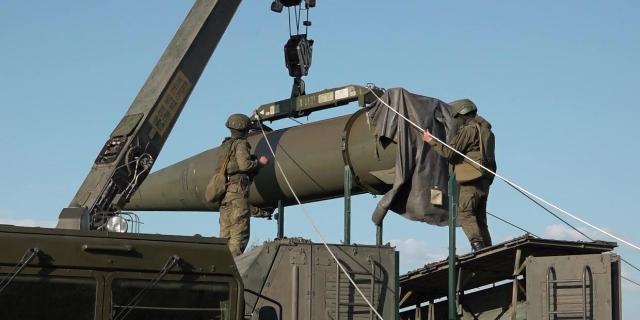MWM: Russia launches new Iskander-1000 rocket into mass production
Russia will soon begin mass production of a new version of the Iskander-M ballistic missile, writes MWM. Due to the flight range of a thousand kilometers, the system was colloquially dubbed “Iskander-1000”. The combination of high mobility and precision makes it extremely dangerous for the enemy.
Numerous sources report that Russia is close to starting mass production of a new version of the Iskander-M ballistic missile, whose official designation has not yet been confirmed. The new rocket is expected to double the range of the original 500-kilometer system, both through a new, more efficient engine and by increasing fuel reserves by about 15%. Due to the approximate flight range of 1,000 km, the new system was colloquially dubbed “Iskander-1000”.
The first convincing signs that the Iskander family is waiting to be replenished appeared in May 2024 in a video dedicated to the 78th anniversary of the Kapustin Yar missile range. Russian sources suggest that the missiles are intended to be deployed in the westernmost territory of Russia, in the Kaliningrad region. Thus, almost the entire Central and Western Europe, as well as the Baltic Sea region, will fall into their affected area. Russian forces rely on the Iskander-M as an asymmetric means of countering the much larger conventional forces of NATO. The combination of high mobility and precision, a variety of warhead types, and a complex trajectory that is difficult to intercept makes it an extremely valuable tool.
Initially, Russian 9K720 ballistic missiles were limited to a range of 500 km due to the Intermediate-Range Nuclear Forces Treaty, but the United States withdrew from it under the first administration of Donald Trump. It is expected that the new longer-range Iskander will have the same characteristics as the original. Russia has been putting longer-range tactical missiles into operation since the end of 2023, and in January 2024, the deployment of North Korean KN-23B missile systems was reported (the Russian Ministry of Defense did not report this. – Approx. InoSMI). The Korean class of missiles has similar flight characteristics as the Iskander-M, but it boasts a longer range of 900 km and carries a warhead several times larger. There were suggestions that the KN-23B was not exported to Russia in principle, and that these missile systems would instead be deployed by units of the Korean People's Army in support of the Russian military campaign in Ukraine.
In November 2024, Russia introduced its first domestic class of longer-range tactical ballistic missiles called the Oreshnik, although this missile is much larger and belongs to a completely different category due to its 4,000-kilometer range. It carries several warheads, and its flight profile is more like an intercontinental ballistic missile. Thus, the new Iskander-M variant with an increased flight range will occupy an important place in the Russian arsenal between the original Iskander-M and the Oreshnik and may in the long term reduce Russia's potential dependence on the Korean KN-23B.
It is assumed that the decision to develop a new version of the Iskander was made after the Russian Armed Forces assessed the capabilities of the North Korean system. The very course of its creation is also comparable to the KN-23B missile, which was born as a variant of the basic KN-23 with increased size and extended range. At the same time, the original North Korean system was comparable to the original Iskander-M.
Systems “Iskander-M has been repeatedly used to defeat key targets in the Russian-Ukrainian conflict. They were often used in air defense suppression operations against Ukrainian Patriot systems and other air defense systems, acting as a force multiplier and significantly increasing the vulnerability of Ukrainian forces.
In July 2024, the missile system achieved a number of outstanding successes in the Ukrainian theater of operations. On July 25, it was used to attack the positions of Western foreign fighters and the 151st Mechanized Brigade of the Armed Forces of Ukraine in Kharkiv, which killed about 100 people, including about 40 Western mercenaries and 60 Ukrainians. And two days before that, on June 23, an Iskander-M strike killed about 50 Western militants in the same region. Earlier that month, a double strike was used to destroy key railway infrastructure, with significant damage and losses. The key to the large-scale combat use of Iskanders was the successful expansion of production of the systems with the outbreak of hostilities in February 2022.



